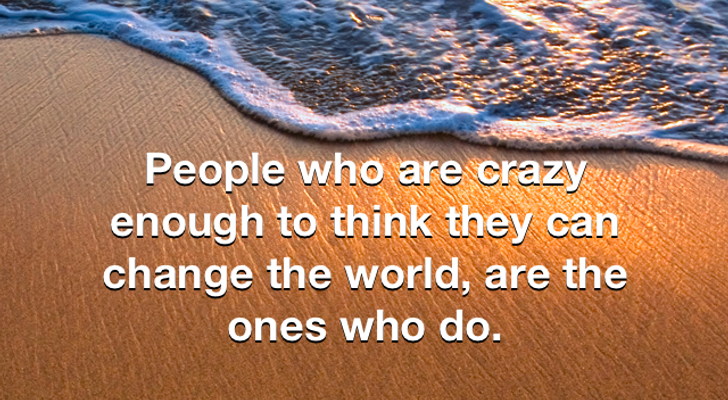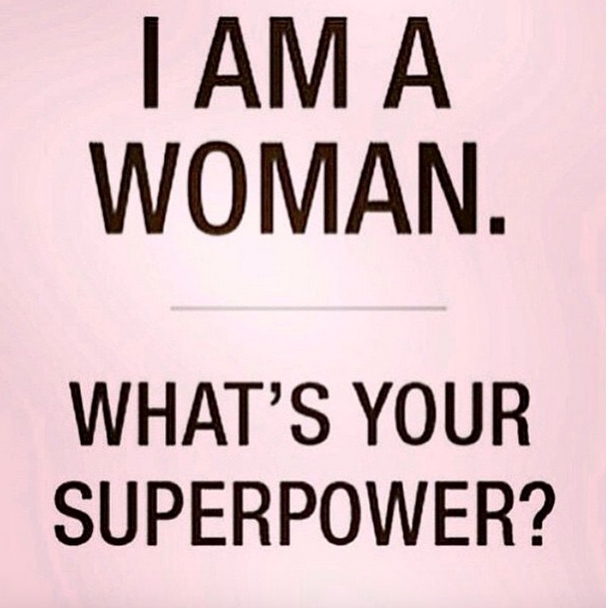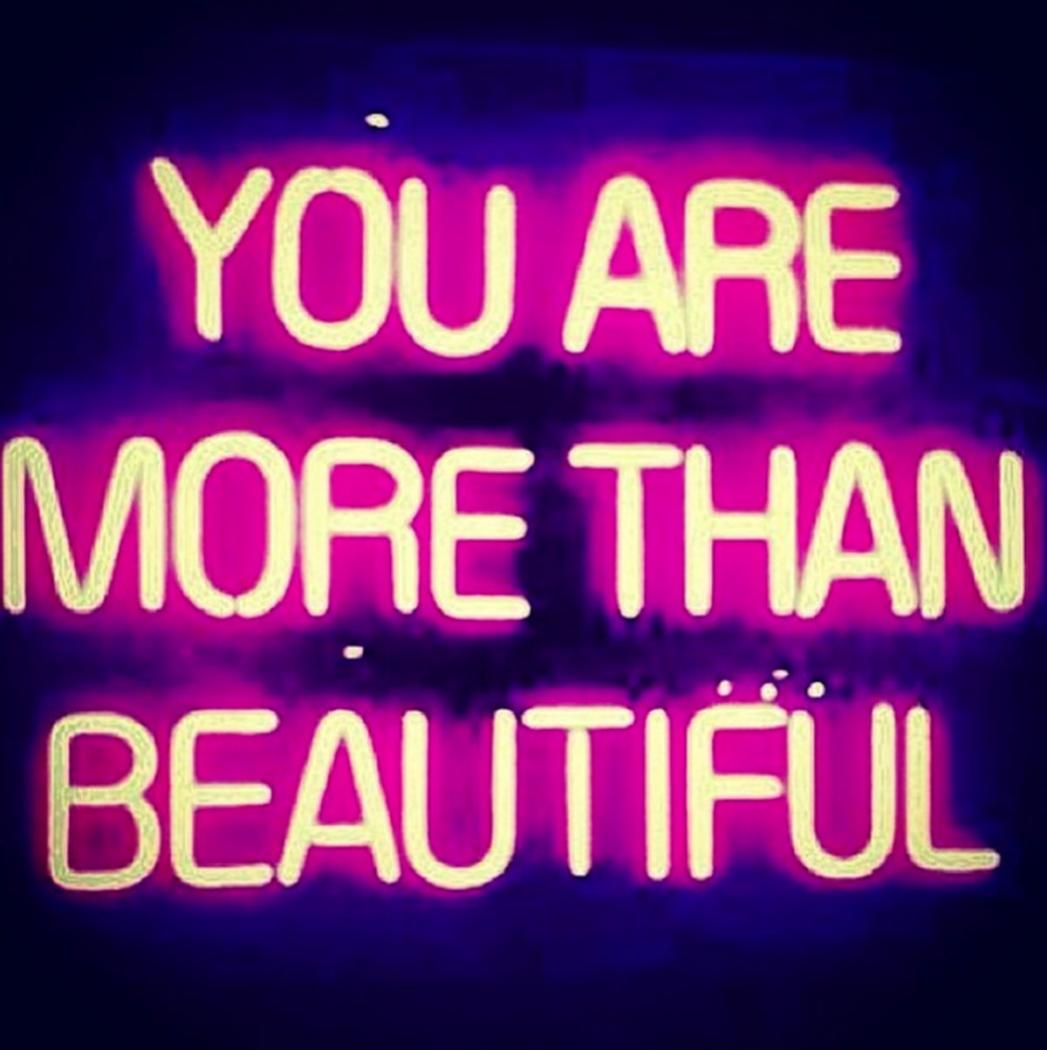Like a college freshman and her dorm room’s Edie Sedgwick poster, the Internet and inspiration are a natural fit, if a little clichéd. This, especially, as the web and its hardest workers—Instagram, Pinterest, and Tumblr, namely—have grown, Hulk-like, into a kind of inspiration factory in recent years. Anyone with a room to decorate or ego to bolster has more than enough material to add to their cause. (Even if that cause is just “vintage mason jars.”) From the spiritual to the aesthetic, the Internet has become our greatest hub for all-you-can-eat inspiration.
Instagram is, of course, a round-the-clock visual feast. But there’s also a thriving community that prefers to use the medium to communicate using text. This clan is connected by the hashtag #inspirationalquotes and a few other iterations of that idea. Surely you follow at least one person who is prone to somewhat personalized Grand Social Media Statements, but on this particular platform, these pre-packaged mantras tend to fall into a few easy categories. 1. “You are Perfect No Matter What They Say” quotes. 2. “I am starting to see the light after an earth-shattering break-up” quotes. 3. “Let’s Do This!!!!” quotes (most frequently used by people who are really into working out). 4. Quotes that sounded a lot better when they were set to music. Sometimes it’s handdrawn or in a “handwriting” font, other times it’s a grainy photo of a page in a book or text photoshopped over an image of something emotional, like a sepia-toned bridge.

For online personalities who need to meet their daily content quota, posting quotes to Instagram can be an easy win. Young Hollywood, generally an earnest bunch, seem to love it. Everybody from Pretty Little Liars‘ Shay Mitchell, spouting Ralph Waldo Emerson’s truths, to the hopelessly romantic Khloe Kardashian have gotten in on the fun. Some celebrities, like Emma Watson (“Don’t feel stupid if you don’t like what everyone pretends to love”), rightfully inspire tribute quotes of their own. January Jones caused a stir when she re-posted an Instagram by Zoe Kravitz promoting female supremacy. (She says it was meant to be tongue-in-cheek, RELAX.) And in rare cases, like Jaden Smith, on his sadly now-defunct Twitter account, they are non-stop quote creators themselves.
It’s not so much that Instagram quotes don’t occasionally come with a kernel of real wisdom, it’s that they are betrayed by their vessel. In other words, more often than not, they are sandwiched by selfies—it can be hard to switch gears between earnest and narcissistic so quickly. This comes with a slightly awkward truth that many Instagrammers have pointed out (via Instagram quote, naturally)—it kiiiiind of seems like it’s the least inspiring people who share “inspiring quotes” the most. Knocks the “likes” out of your sails a bit, doesn’t it?
Tumblr may be responsible for ushering in the era of a more self-aware response to the unconditionally inspirational. Know Your Meme‘s assessment of Tumblr’s role shows that as interest in “picture quotes” rose rapidly around 2010 and 2011, naturally, parody accounts (like Text in Space) also proliferated. But on top of commentary, Tumblr has offered its own brand of inspiration. With users who create collectable art (or rearrange existing art in an interesting way), it may even be the bridge between the more lowbrow text-based inspiration and our increasingly fine-tuned culture of visual inspiration. The mix of wit and artistic prowess (plus a generous amount of flexibility and space to display it) is what has spawned content compelling enough to merit partnerships like Paddles On! with art auction houses like Phillips.

When people are not looking for inspiring wisdom on Instagram (or post-inspirational inspiration on Tumblr), you may find them over on Pinterest pulling together images that they hope will help make sense of the next thing they want to do, buy, or decorate. You used to have to go out of your way to do this kind of thing—take a trip to the library or subscribe to magazines (not just any magazines, the right ones). But now it’s easier than ever to find inspiration—or what creatives call “swipe”—and you’re likely to discover that it all ends up in the same place.
When it comes to aesthetics, it’s true that the more you see, the sharper your eye becomes. This is relevant to everything from furniture to photography to film. But what if the internet’s inspiration pool has become so finely honed that we’re all just looking at and liking the same stuff? Being able to identify what is “good” design is just a stop on the way to having a sensibility of your own. And in this half-baked state, we all run the risk of living in a forever loop of pinning the same mid-century modern furniture as every other lady in your Aunt Jean’s book club. When the underground goes online, you may be surprised how many people that obscure chair you’ve liked since, like, forever, has the potential to win over.

via @caradelevingne
All of this said, the Inspirational Web can still be a significant source and tool. Like with anything, it’s about what we’re willing to put into it. The internet is always testing us: Are you going to take your daily loop around the usual suspects, or are you going to do something creative with your time online?
Lots of professional artists have said this, but the painter Chuck Close put it most simply: “Inspiration is for amateurs.” He’s exactly right and it’s not as gruff as it sounds. Amateurs, or “enthusiasts,” are lucky to have the resources that we have now to discover more about the things that interest us. But it’s on each sufficiently inspired person to take the next step from “thinking about doing” to “doing”—and not let the act of absorbing inspiration satisfy us.
Credits
Text Mallory Rice
